TickerTape
Weekly Global Stablecoin & CBDC Update

This Week’s Stories
- HK Stablecoin Licensing Nears Launch
- HKMA and PBoC Unveils Payment Connect
- BoE Governor on the Digital Pound
- Strategic Blueprint for Web3 in HK
- Finserv-PayPal Partnership
- June 30: MAS’ Strict Regulations
- Texas & Strategic BTC Reserve
- BIS Issues Stablecoin Risks Warning
- BOK: Won-Denominated Stablecoins First via Banks
- Mastercard Partners for Stablecoins
- BoE & BISIH Launch Innovation Challenge
- Taurus Launches Private Stablecoin Contract
- Hong Kong Unveils LEAP Framework
Hong Kong’s Financial Secretary, Paul Chan Mo‑po, announces that the city is set to issue its first official stablecoin licenses within months. This follows the passage of the Stablecoins Ordinance, effective August 1, which mandates that any issuer of fiat‑pegged stablecoins in or linked to Hong Kong must be authorized by the Hong Kong Monetary Authority (HKMA). Various firms including JD.com, Ant Group, Standard Chartered, and logistics companies have already submitted applications. Earlier sandbox trials have centered on fiat-backed stablecoins, with future plans to explore asset-linked versions. Chan emphasized a phased, responsible approach: first regulation, then innovation, to support practical real‑world uses like cross‑border payments. Hong Kong aims to serve as a fintech testbed, potentially paving the way for broader adoption in mainland China.
Key Takeaways:
- Licensing Imminent. With multiple applicants in the pipeline, licenses for stablecoin issuance should be approved within a few months.
- Fiat‑First, Then Assets. The initiative begins with currencies pegged to fiat before expanding to asset‑backed or commodity‑based stablecoins.
- Hong Kong’s strategy combines legal safeguards with encouragement for real‑use cases rather than speculation.
- Cross‑Border Boost. A core objective is enhancing global payment systems, reducing friction and costs.
- Hong Kong’s stance may set precedents for the mainland, reinforcing its role as a financial innovation hub.
- The Stablecoins Ordinance, launching August 1, shows strong legislative momentum, highlighting government support.
Why it Matters:
- Global Regulatory Pioneering: Hong Kong joins a small group of jurisdictions (like Switzerland and Singapore) that have formal digital‑asset frameworks, an important leap in legitimizing stablecoins.
- Economic Edge & Competitiveness: As global markets shift toward faster, blockchain‑enabled finance, Hong Kong’s policy could attract fintech firms and capital, reinforcing its position against rivals like Singapore.
- Acting as a sandbox for mainland influence, Hong Kong’s outcomes could guide digital currency ventures on the Chinese mainland.
- By focusing on practical use cases, especially in international payments, it’s not just crypto hype, it’s about efficiency and cost savings in tangible markets.
- Investor Assurance: The regulatory transparency reduces risk for institutional and retail uptake, making stablecoins more trustworthy.
On 20 June 2025, the HKMA, in collaboration with the People’s Bank of China (PBoC), unveiled Payment Connect, a direct linkage between Mainland China’s Internet Banking Payment System (IBPS) and Hong Kong’s Faster Payment System (FPS). Set to begin operations on 22 June 2025, this infrastructure allows individuals and businesses to transfer small-value payments in real time across the border simply by entering a recipient’s mobile number or account details. A formal launch ceremony in Beijing was attended by key figures including PBoC Governor Pan Gongsheng and HKMA Chief Executive Eddie Yue, alongside representatives from participating banks from both jurisdictions. Initially, six banks from each side will participate, with plans to gradually expand the network.
Key Takeaways:
- Seamless Cross-Boundary Transfers: Enables real-time payments in RMB and HKD between Hong Kong and the Mainland for personal and business use.
- Simple & Convenient: Users can transfer money using only a mobile number or bank account, with no extra documentation needed for individuals.
- Initial Rollout & Scalability: Starts with six banks per region, with plans to expand participation.
- 24/7 Availability: Available round-the-clock in Hong Kong; 16-hour daily service in the Mainland.
- Regulatory Alignment: Transactions comply with existing current account regulations.
- Multi-Use Scenarios: Applicable for tuition, salaries, utility bills, and daily remittances.
Why it Matters:
- Strengthens Financial Integration: Deepens collaboration between Hong Kong and Mainland China’s financial systems.
- Enhances Hong Kong’s Role: Reinforces its status as a global financial hub and offshore RMB centre.
- Reduces Friction: Improves cost and speed of cross-border payments, especially for SMEs and individuals.
- Lays Groundwork for Future Expansion: Could serve as a model for broader Greater Bay Area or regional payment connectivity.
Governor Andrew Bailey expressed clear caution about the adoption of a retail CBDC, often referred to as the “digital pound” or “Britcoin”. He acknowledged the theoretical advantages it might bring, such as smart-contract compatibility, enhanced fraud prevention, and leveraging digital ledger functionalities. However, he firmly stated that similar benefits could be achieved through innovations in the private sector: specifically, tokenised deposits offered by commercial banks, which could replicate many of the intended advantages without creating new forms of money.
Bailey emphasised that the presumption for a retail CBDC must be benefit-driven. While he welcomed exploration into digital money forms, he emphasised the need for clear and compelling utility before proceeding. “It seems like a failure of imagination” not to explore, he said, “but I remain to be convinced that we need to create new forms of money to achieve this”.
In contrast, Bailey showed support for the development of a wholesale CBDC designed for interbank and institutional use. He indicated that the Bank of England is “well on the way” with work in this area, recognising the demand from financial institutions for a secure, tokenised form of central bank money within wholesale systems.
A key concern he reiterated was the risk to the “singleness of money”. Any CBDC or stablecoin must meet strict standards to avoid fragmenting the core monetary framework and undermining trust in central bank money.
Key Takeaways
- Cautious on Retail CBDC: Andrew Bailey expressed scepticism about the need for a retail digital pound, stating that many of its proposed benefits, such as programmability and fraud prevention can already be delivered through private-sector innovation, especially tokenised bank deposits.
- Support for Wholesale CBDC: He voiced clear support for a wholesale CBDC for interbank and institutional use, noting progress at the Bank of England on this front.
- Utility Over Novelty: Bailey stressed that any move toward a CBDC must be driven by demonstrable public benefit, not just technological possibility or trend-following.
- Risks to Monetary Unity: A strong concern was the potential risk to the “singleness of money”, the principle that all money in the economy should be exchangeable at par which could be undermined by introducing new forms of digital money without safeguards.
- Open to Exploration, But Not Yet Convinced: While open to exploring CBDCs, Bailey made it clear he remains unconvinced that a retail CBDC is necessary at this time.
Why it Matters:
- Signals Conservative Stance: Bailey’s remarks reinforce the Bank of England’s cautious position on retail CBDCs, diverging from more aggressive efforts in places like China or the EU.
- Guides UK Policy Trajectory: His comments help frame the UK’s approach as one prioritising stability, financial integrity, and clearly articulated use cases over technological experimentation.
- Emphasises Financial System Integrity: The focus on preserving the singleness of money reflects a deep concern about maintaining public trust in the monetary system amid increasing innovation.
- Differentiates Retail vs Wholesale Strategy: Bailey’s nuanced stance backing wholesale but hesitating on retail signals a likely bifurcation in CBDC development paths and use cases.
- Influences Global CBDC Dialogue: As head of a leading central bank, Bailey’s views will influence international thinking on the design, risks, and justification for CBDCs.
The Web3 Harbour, in collaboration with PwC Hong Kong, has released the “Hong Kong Web3 Blueprint”, outlining five strategic pillars to accelerate blockchain development in the city. These pillars: talent, market infrastructure, standards, regulation, and funding are aimed at strengthening Web3 applications across sectors such as open finance, trade finance, capital markets, asset management, and carbon markets. Additionally, the blueprint plans five action groups launching in August, each focusing on critical areas like stablecoins, funds, virtual-asset trading platforms, legal/compliance, and custody/OTC trading. With clear regulatory momentum, such as Hong Kong’s impending stablecoin ordinance industry leaders are urging the private sector to take the lead in embedding Web3 technologies into the city’s financial infrastructure
Key Takeaways:
- Comprehensive Strategy: The blueprint defines five essential “enablers”: talent, infrastructure, standards, regulation, and financing to unlock Hong Kong’s Web3 potential.
- Targeted Working Groups: Action groups launching in August will drive focused innovation in stablecoins, fund issuance, trading platforms, legal oversight, and custody/OTC infrastructure.
- Private Sector-Led: While private-public collaboration is encouraged, the blueprint is positioned as a roadmap for the private sector to operationalise Web3 within financial and economic systems.
- Regulatory Alignment: The initiative builds on recent legislation such as the stablecoin ordinance (effective August), highlighting a policy environment now conducive to Web3 adoption.
Why it Matters:
- Infrastructure Maturation: Establishing foundational blocks like standards and regulatory clarity is vital for turning Web3 from pilot projects into reliable services.
- Accelerated Innovation: Focused action groups ensure targeted development in high-impact use cases (e.g., tokenised funds and stablecoins), spurring relevant growth.
- Strengthens Hong Kong’s Role: The blueprint positions Hong Kong as a proactive Web3 hub, complementing its broader position as a global financial centre.
- Private-Led Ecosystem: Delegating execution to industry players ensures solutions are market-driven, scalable, and responsive to real-world needs.
- Global Signal: This move sends a message to international investors that Hong Kong is opening a pathway for institutional-grade, decentralised finance.
Fiserv and PayPal expanded their partnership to build interoperability between FIUSD and PayPal USD (PYUSD), enabling consumers and businesses to move funds domestically and internationally. The collaboration aims to leverage both companies’ global reach across banking, consumer, and merchant payments to scale stablecoin adoption worldwide. The partnership addresses common business challenges including slow fund transfers, inflation impacts, and currency value fluctuations through blockchain-based solutions
Key Takeaways:
- Partnership enables seamless fund movement between FIUSD and PYUSD stablecoins.
- Combines Fiserv’s banking infrastructure with PayPal’s consumer payment network.
- Addresses real-world business problems through faster, 24/7 global transfers.
- Bridges traditional financial systems with emerging blockchain technologies.
Why It Matters:
- Creates interoperable stablecoin ecosystem that could challenge traditional banking rails.
- Demonstrates how major fintech companies are collaborating rather than competing in digital assets.
- Provides practical solutions for businesses facing currency volatility and transfer delays.
- Represents significant infrastructure development for programmable payments globally.
Singapore’s Monetary Authority (MAS) has issued an ultimatum to all crypto firms incorporated in Singapore offering digital token services to overseas clients. By June 30, 2025, these entities must either obtain a Digital Token Service Provider (DTSP) license under the Financial Services and Markets Act 2022 or immediately cease all cross-border operations. The directive applies regardless of business scale, with no grace period or transitional arrangements offered. MAS has made licensing approvals extremely rare due to anti-money laundering concerns, effectively creating a de facto ban on new crypto licenses.
Key Takeaways:
- All Singapore-based crypto firms serving overseas clients must comply by June 30, 2025, with no exceptions
- Violations carry criminal penalties of up to SGD 250,000 fines and three years imprisonment
- MAS will “generally not issue” new DTSP licenses due to AML/CFT concerns
- Minimum base capital requirement of SGD 250,000 for license applications
- Regulatory focus aims to prevent firms from gaining Singapore legitimacy while avoiding stricter overseas rules
Why It Matters:
- Represents one of the world’s most stringent crypto regulatory crackdowns in a major financial hub
- Eliminates regulatory arbitrage opportunities that allowed Singapore-based firms to serve global clients
- Forces immediate business model changes for crypto companies using Singapore as a base
- Demonstrates increasing global trend toward strict crypto regulation and compliance requirements
Texas Governor Greg Abbott signs Senate Bill 21 on June 22, 2025, making Texas the first U.S. state to officially allocate public funds to a Bitcoin reserve. The Texas Strategic Bitcoin Reserve operates independently from the state treasury and is managed by the Texas Comptroller of Public Accounts, guided by a crypto expert advisory committee. Only cryptocurrencies with a 12-month average market cap above $500 billion qualify. Currently, only Bitcoin meets this threshold. The reserve is protected from being absorbed into the general revenue fund and will issue biennial public reports on its holdings and performance.
Key Takeaways:
- First state-backed Bitcoin reserve: Texas is the first U.S. state to use taxpayer dollars to invest in Bitcoin as a state asset.
- Managed separately: The reserve operates outside the general state treasury and is overseen by the Texas Comptroller.
- Expert oversight: A special advisory committee of crypto professionals guides management.
- Market cap rule: Only cryptocurrencies with a 12-month average market cap above $500 billion qualify—currently only Bitcoin.
- Funding flexibility: The reserve can grow through airdrops, donations, investment proceeds, and forks.
- Legal protection: House Bill 4488 shields the reserve from being swept into general revenue.
- Transparency: Biennial public reports on holdings and performance are required.
Why It Matters:
- Sets precedent: Texas is pioneering digital asset adoption in government finance, potentially influencing other states.
- Inflation hedge: The reserve is intended to diversify state assets and protect against inflation and economic volatility.
- Regulatory clarity: Clear rules and expert oversight provide a model for responsible public investment in digital assets.
- Transparency and accountability: Regular public reporting ensures openness about state crypto holdings.
- Legal safeguards: Protections ensure the reserve’s continuity, even amid shifting political priorities.
The Bank for International Settlements (BIS) publishes a chapter of its Annual Economic Report 2025, proposing a “next-generation monetary and financial system” built on “tokenisation” and a “unified ledger,” led by central banks. This infrastructure would integrate tokenized central bank reserves, commercial bank money, and financial assets on a single ledger, aiming to streamline operations, cut costs, and innovate financial instruments, especially for cross-border payments and securities.
Crucially, central banks prioritize “singleness,” “elasticity,” and “integrity.” While the current two-tier system performs well, “stablecoins are found to perform poorly” due to lack of central bank settlement, inelastic supply, and vulnerability to illicit activities, raising concerns for monetary sovereignty and stability.
The preferred solution is a “tokenised financial system on tried and tested foundations of trust,” utilizing tokenized central bank reserves, commercial bank money, and government bonds on a unified ledger. This promises greater efficiency, liquidity, automation, and monetary policy effectiveness. Central banks are crucial for leading this transformation, ensuring innovation serves the public interest and creating a more integrated, efficient, and robust monetary future.
Key Takeaways:
- Tokenization is a transformative innovation poised to both improve existing financial processes and enable new ones, particularly in cross-border payments and securities markets.
- A unified ledger incorporating tokenised central bank reserves, commercial bank money, and government bonds can form the foundation for the next-generation monetary and financial system, harnessing tokenization’s full benefits.
- Stablecoins, despite some promise, fall short of being the mainstay of the monetary system because they fail the three key tests of singleness, elasticity, and integrity.
- The central bank’s foundational role is critical for preserving trust, stability, and the core architecture of the monetary system, especially by providing central bank reserves as a trusted settlement asset.
- Singleness of money, elasticity, and integrity are crucial features for ensuring money is fit for purpose, regardless of technological changes.
Why It Matters:
- Enhanced Economic Efficiency and Accessibility: Tokenisation, especially on a unified ledger, can significantly reduce frictions, delays, and costs in financial transactions (e.g., cross-border payments), leading to more efficient and accessible financial services for businesses and individuals.
- Maintaining Financial Stability and Trust: By preserving the central bank’s role and relying on tokenised central bank reserves, the proposed next-generation system aims to maintain the singleness of money and the critical trust required for economic coordination, avoiding the societal costs associated with unsound money.
- New Financial Possibilities: The programmability enabled by tokenisation and unified ledgers can unlock entirely new financial instruments and automated processes, such as contingent execution of collateral management or insurance contracts, fostering innovation and potentially increasing returns on investments.
- Mitigating Risks from Unsound Digital Currencies: The clear assessment of stablecoins’ shortcomings highlights the importance of guiding legitimate digital innovations into a regulated framework anchored by central banks, preventing the risks of monetary sovereignty loss, financial instability, and illicit activity.
- Proactive Central Bank Leadership: The emphasis on central banks articulating a vision, providing regulatory frameworks, offering foundational assets, and fostering public-private partnerships underscores their crucial role in shaping the future of money safely and efficiently, rather than letting unregulated private digital currencies dictate the path.
Bank of Korea (BOK) Deputy Governor Ryoo Sang-dai proposes a phased introduction of won-denominated stablecoins, starting with tightly regulated commercial banks before expanding to non-bank entities. Ryoo cited risks to monetary policy and settlement systems, urging safeguards against financial disruptions and user protection. The approach aligns with President Lee Jae Myung’s pledge to enable corporate stablecoins while ensuring regulatory frameworks. The BOK also plans a second CBDC pilot with commercial banks amid rising housing costs and household debt concerns.
Key Takeaways:
- Won stablecoins should debut under strict bank supervision before broader rollout.
- BOK emphasizes capital flow risks and the need for user-protection “safety nets.”
- CBDC testing continues as housing inflation complicates monetary policy.
- Legislation is advancing to support Korea’s competitive stance in digital finance.
Why it Matters:
- Risk mitigation: Prioritizes stability in stablecoin adoption through regulated entities.
- Monetary policy: Highlights CBDCs’ role in managing inflation and debt challenges.
- Strategic positioning: Positions Korea to compete in digital asset innovation.
- Regulatory model: Offers a template for other nations considering stablecoin integration.
Mastercard is taking a significant step forward in the world of stablecoins, announcing a range of new partnerships and capabilities. The payments giant is joining Paxos’ Global Dollar Network, enabling the integration of multiple stablecoins, including USDG, USDC, PYUSD, and FIUSD, across its network. Mastercard is also working to unlock real-world use cases for stablecoins, such as cross-border payments, B2B applications, and the introduction of Mastercard One Credential, which allows consumers to spend both fiat and stablecoin balances through a single product.
Importantly, Mastercard is also investing in security and compliance measures, with the launch of Crypto Secure and Mastercard Crypto Credential, to ensure that stablecoin transactions are safe and compliant. By bridging the gap between the crypto and traditional financial ecosystems, Mastercard aims to make stablecoins as seamless and ubiquitous as traditional forms of payment.
Key Takeaways:
- Mastercard is joining Paxos’ Global Dollar Network, enabling the integration of multiple stablecoins, including USDG, USDC, PYUSD, and FIUSD, across its network.
- Mastercard is unlocking real-world use cases for stablecoins, such as cross-border payments, B2B applications, and the introduction of Mastercard One Credential, which allows consumers to spend both fiat and stablecoin balances through a single product.
- The company is investing in security and compliance measures, with the launch of Crypto Secure and Mastercard Crypto Credential, to ensure that stablecoin transactions are safe and compliant.
- Mastercard’s multi-coin approach is designed to ensure flexibility, reach, and readiness for the next wave of digital currency innovation.
- By bridging the gap between the crypto and traditional financial ecosystems, Mastercard aims to make stablecoins as seamless and ubiquitous as traditional forms of payment.
Why It Matters:
- Mastercard’s comprehensive approach to stablecoin integration demonstrates the company’s commitment to shaping the future of digital payments and embracing the potential of blockchain technology.
- The integration of multiple stablecoins across Mastercard’s global network will enhance the flexibility and accessibility of digital currencies for consumers and businesses.
- Mastercard’s focus on security and compliance measures, such as Crypto Secure and Mastercard Crypto Credential, will help build trust and drive mainstream adoption of stablecoins.
- The unlocking of real-world use cases, like cross-border payments and B2B applications, showcases the practical benefits of stablecoins and their ability to address pain points in the financial system.
- Mastercard’s partnership with Paxos and collaboration with other stablecoin issuers highlight the importance of collaboration and interoperability in the digital payments ecosystem.
- By positioning itself as a key player in the stablecoin space, Mastercard is solidifying its role as an innovator and leader in the evolving digital payments landscape.
The Bank of England, in collaboration with the Bank for International Settlements Innovation Hub (BISIH) London Centre, is launching a DLT Innovation Challenge to explore the use of external, decentralized ledgers for the settlement of wholesale central bank money. The challenge aims to engage with innovative firms from around the world to showcase their solutions and expertise in this area.
The goal is to understand whether central banks need to separate the issuance of money from the underlying technology, and whether operating their own ledger is required. The challenge will focus on solutions that can support secure, scalable, and interoperable settlement of central bank money on external, programmable ledgers where trust is not inherent. Successful applicants will participate in virtual “deep dives” and present at a showcase event in October 2025, where the Bank and BISIH will share their learnings with the central banking community. They are accepting applications until 23 July 2025.
Key Takeaways:
- The Bank of England and the Bank for International Settlements Innovation Hub (BISIH) London Centre have launched the DLT Innovation Challenge to explore the use of external, decentralized ledgers for the settlement of wholesale central bank money.
- The challenge focuses on solutions that can support secure, scalable, and interoperable settlement of central bank money on external, programmable ledgers where trust is not inherent.
- Successful applicants will participate in virtual “deep dives” and present their solutions at a showcase event in October 2025, where the Bank and BISIH will share their learnings with the central banking community.
- The initiative aligns with the Bank of England’s broader efforts to adapt to the rapidly evolving wholesale technology landscape, including the renewal of its Real-Time Gross Settlement (RTGS) service and the exploration of wholesale CBDC and synchronization with external ledgers.
- Deadline: 23 July 2025.
Why It Matters:
- The DLT Innovation Challenge represents a forward-looking and collaborative approach by the Bank of England and BISIH to engage with the private sector and explore the potential of distributed ledger technology in the context of wholesale central bank money settlement.
- By focusing on solutions that can operate on external, decentralized ledgers, the challenge pushes the boundaries of traditional central bank-controlled settlement infrastructure, highlighting the Bank’s openness to innovative approaches.
- The challenge’s emphasis on settlement finality, security, scalability, network and asset control, and interoperability reflects the critical considerations for central banks as they navigate the evolving digital payments landscape.
- The learnings from this challenge will not only benefit the Bank of England and BISIH but also inform the broader central banking community, as they grapple with the implications of transformative technologies like DLT on the financial system.
- The initiative aligns with the Bank of England’s broader efforts to adapt to the rapid pace of innovation in wholesale payments, ensuring that central bank money remains compatible with emerging technologies and maintains trust and stability in the financial system.
- Ultimately, the DLT Innovation Challenge underscores the Bank of England’s commitment to proactively engaging with the private sector and driving innovation in the realm of central bank money and wholesale settlement.
Taurus SA has announced the deployment of the first-ever private stablecoin contract, marking a significant advancement in the digital asset landscape. This innovative solution provides enhanced confidentiality, untraceability, and anonymity while allowing access for authorized parties, including issuers, regulators, and law enforcement. Built on the Aztec Network, the stablecoin leverages zero-knowledge proofs, combining privacy with essential compliance features.
This deployment aligns with the recent passage of the GENIUS Act by the US Senate, which establishes a legal framework for stablecoin issuance and oversight. With stablecoin supply exceeding $250 billion, a staggering 1200% increase since 2020, Taurus anticipates that this figure could rise to between $1-2 trillion by 2030.
Key Takeaways
- Taurus has launched the first private stablecoin contract, enhancing user privacy.
- The contract allows for controlled access by authorized parties.
- Built on the Aztec Network, it utilizes zero-knowledge proofs for compliance.
- The launch coincides with the US Senate’s GENIUS Act, facilitating regulatory clarity.
- Anticipated growth in stablecoin supply could reach $1-2 trillion by 2030.
Why It Matters
- Enhanced Privacy: Addresses privacy concerns for financial institutions, fostering user trust.
- Regulatory Compliance: Meets compliance requirements, making stablecoins more appealing to regulators.
- Market Growth: Positions Taurus strategically for the increasing demand for stablecoins.
- Real-World Adoption: Facilitates practical applications in payroll and daily transactions.
On June 26, the Hong Kong Government released Policy Statement 2.0 on the Development of Digital Assets, reinforcing its ambition to position the city as a global leader in the digital asset (DA) sector. Building on the initial framework introduced in October 2022, this new policy emphasizes a trusted ecosystem that prioritizes risk management and investor protection while benefiting the real economy.
The statement introduces the “LEAP” framework, focusing on:
Legal and Regulatory Streamlining: Establishing a unified regulatory framework for DA service providers, with the Securities and Futures Commission (SFC) leading licensing efforts for DA dealing and custodian services.
Expanding Tokenized Products: Regularizing tokenized government bonds and incentivizing the tokenization of real-world assets (RWAs), enhancing liquidity and accessibility.
Advancing Use Cases and Collaboration: Implementing a licensing regime for stablecoin issuers to promote real-world applications and fostering partnerships among regulators and technology providers.
People and Partnership Development: Strengthening talent development through collaborations with industry and academia, positioning Hong Kong as a center for DA knowledge-sharing.
Key Takeaways
- Hong Kong aims to be a global hub for digital assets with the new policy framework.
- The “LEAP” framework focuses on legal streamlining, product expansion, use cases, and talent development.
- Licensing for stablecoin issuers will commence on August 1, promoting practical applications.
- Collaboration among regulators and market participants is a priority for infrastructure development.
Why It Matters
- Enhances Regulatory Clarity: A unified framework improves investor confidence and attracts global players.
- Boosts Economic Integration: Tokenization can enhance liquidity and accessibility in various financial sectors.
- Fosters Innovation: Encourages the development of diverse applications for digital assets, driving market growth.
- Cultivates Talent: Focus on education and collaboration supports the growth of a skilled workforce in the digital asset field.





